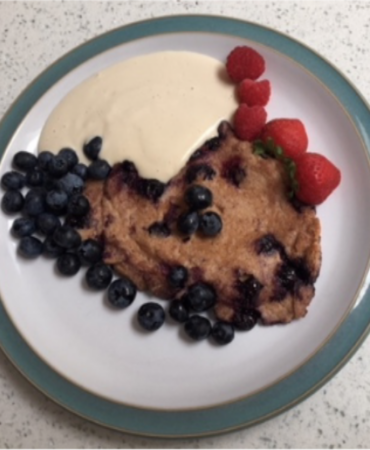Currently Empty: £0.00

Herb of the Month: October
Welcome to October. With Autumn well and truly here our go to meals are changing to focus on warming comfort foods. Sarah comes to our aid with a roast recipe, adaptable to a vegetarian diet, to warm us as we shelter from the wind and rain. Happy reading, happy cooking!
Written by Sara Dixon
Hyssop knows things. It knows that its leaves must be left uncut during Summer, so that the beautiful multi coloured choice of flowers will develop and the pollinators will feast on them. It also knows that, once Autumn arrives, its flowers will be gone and we, the humans, will be looking for warming, tasty, low and slow cooked food, and so its long stalks reach upwards to attract our attention – ready to be cut for the pot!
We know that herbs react differently in terms of how their flavours come across when cooked, left raw, lightly warmed; Hyssop is not a raw herb that tastes great. It comes into its own when cooked over a long period of time so that its flavours add a certain something to our food. That certain something is often described as a mix of Mint and Sage. I don’t taste it like that (we all have different taste buds), for me it is a taste which just adds a real salty/peppery\sweet\sharp taste – yes, all of those!
Hyssop is easy to grow. It likes dry to well drained soil and is perfectly happy in Autumn being battered by wind and rain! I find the type of soil – alkaline or acidic – doesn’t make a jot of difference. It spreads beautifully in the ground but is equally happy in a pot (it makes a beautiful hedge). It is the perfect starter for ‘Autumn in the Herb Larder’ collection. It is great in stews, casseroles etc, but I like this way of using it – not too long in cooking time but long enough!
General tips to remember:
1. You need plenty more fresh herbs than dried herbs. With Hyssop I tend to use a handful of
chopped leaves as a minimum for the following dish.
2. Everyone’s taste buds are different. Recipes can be too prescriptive. Use them as a guide, have a
go, then adapt your proportions.
3. Not everyone’s ovens are calibrated to the same efficiency to keep an eye if you are not familiar
with how your own oven works.
Hyssop Roast:
Take some chicken and keep the skin on it – you can use legs, breasts, thighs or a whole one.
Just make sure it is something that has skin as you will tuck your Hyssop under the skin.
Alternatively, you can taken another type of meat that you like, or vegetables. Squash or potatoes
are perfect at this time of year – keep it seasonal!
Just make sure it is something that has skin as you will tuck your Hyssop under the skin.
Alternatively, you can taken another type of meat that you like, or vegetables. Squash or potatoes
are perfect at this time of year – keep it seasonal!
Chop your chosen veggies or chicken into small chunks.
Chop some onions. Chop your Hyssop. Mix the onions and Hyssop with some soft cheese –
goats’ cheese is great but simple grated cheddar, or sheeps’ cheese, is good too.
If using chicken, stuff the mixture under the skin. OR if using meat or veggies, place your mixture with your meat and veggies in a silver foil
‘packet’ all mixed together.
Then roast your chicken/pieces. Or bake your meat/veggies in foil.
Cook it low and slow. Give the Hyssop and other ingredients time to blend together. With your
chicken/meat cook it on high for about 5 minutes to start with and then turn it right down.
I tend to start chicken/meat off at 200 degrees (fan assisted) for 5 minutes and then turn it down to 150
degrees and keep an eye on it, checking it after 20 minutes. Cooking time will depend on your cut of chicken
is/how small you have cut your meat.
Sara runs Hawkwell Herbs, selling herbs that she grows herself and teaching cooking courses. Visit hawkwellherbs.co.uk to discover more and find Sara on Instagram @hawkwellherbs. If you would like to receive the next Herb of the Month straight to your inbox, email “Herb of the Month please” to blog@herbsociety.org.uk




